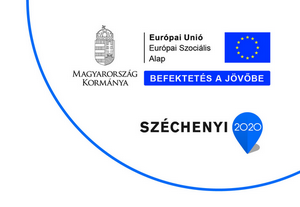Tettye - as the entrance to the Central Mecsek Mountains - is located on a plateau 253 metres above sea level. The four and a half hectare park is now used exclusively as a green park and recreation area. It is surrounded on three sides by hills, with the town of Pécs below to the south. The square itself was built on the site of a quarry that was probably used by the Romans. Its name probably derives from the Turkish word 'tekia', meaning 'monastery'. The word refers to the summer palace of Bishop György Szathmáry, built in the early 16th century and used as a dervish monastery in Turkish times. The ruins of the summer palace on the southern part of the square are a popular tourist attraction, and in summer they also house an open-air theatre.
South of the ruins is the unique geological wonder of the Tettye lime tuff cave. The water from the Tettye spring has seeped through the loose but thick calcareous tuff, some 10,000 years old (the spring, located in the rock face near the Pintér Garden, used to turn the wheels of water mills in the 1880s), diluting the lime and forming a cave. Over time, the passages were artificially widened, and the new passages created an underground labyrinth. These passages were once used as living quarters. In the early 1900s, the cave, known as the 'Gates of Hell', was a real tourist attraction, with a 'fearsome dragon' living in one of the passages. This mysterious cave system was opened to the public in March 2008 and houses an interactive exhibition where you can learn about the world of caves, the history of the calcareous tufa tunnels and other interesting facts.
The Tettye spring, located on the southern side of the park, is one of the best known and most important karst springs in the Mecsek, with a large catchment area. The town established its first regular water network in 1892, when a major typhus epidemic prompted the town's leaders to replace inadequate pipes with cast iron pipes and use the karst water of the Tettye spring to provide water. The importance of healthy drinking water is reflected in the fact that the waterworks were opened by Emperor Franz Joseph, King of Hungary.
Heading east, you can reach the glistening white limestone cliffs of Mount Havi, dominating the Tettye. At the top of the rock is a cross made by sculptor Sándor Rétfalvi in 1973. After a short walk, we arrive at the Baroque chapel on Mount Havi, built to commemorate the 1697 plague epidemic. As the citizens promised, they carried the building materials up the hill themselves. Today, the chapel is also a place of pilgrimage.
The climb to the Balázs resting place (a small resting place) at the top of the almost vertical rock face takes about thirty minutes. From the north-eastern corner of the square, follow the path marked with a yellow line and turn left at the railing. Climb the steps carved into the hillside to enjoy the view of the Tettye Valley and the panorama of the city. You will soon reach the top and the view will make up for everything. Walking back towards the Pintér Garden, on the eastern side of the park, you will find the Tüke Wine House, a worthy showcase for Pécs' wine selection, where visitors can taste 30-50 different wines (and sparkling wines) made in Pécs. The area surrounding the wine house is a vineyard planted with Pécs' typical grape variety, Zinfandel (Cirfandli).
Opposite the square, on the north side of the park, is the well-established Tettye Restaurant, which has been serving excellent Swabian and Hungarian cuisine for almost a quarter of a century.
Megközelíthetőség
Főpályaudvarról 33 számú busszal megközelíthető.
| Monday: | 00:00 - 24:00 |
| Tuesday: | 00:00 - 24:00 |
| Wednesday: | 00:00 - 24:00 |
| Thursday: | 00:00 - 24:00 |
| Friday: | 00:00 - 24:00 |
| Saturday: | 00:00 - 24:00 |
| Sunday: | 00:00 - 24:00 |








